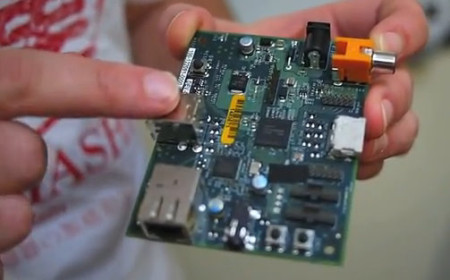A lot has happened in the space of two (2) years in the Raspberry Garden grown by Raspberry Pi Foundation’s Founder Eben Upton as stated in $25 Raspberry Pi Mini USB PC and the $22 Aakash Tablet – Computer Adoption on a Budget. It’s kinda similar to the Cotton candy USB Stick computer FX Tech debuts Cotton Candy – Sweet Android Gingerbread USB Stick Mini PC.
The Briton’s idea to develop a Computer on a Circuit board for US$25 for children in Developing Nations to get access to computing is Growing Strong like House Tyrell in Game of Thrones to make computing available to anyone with a TV Set has now caught the Develop Community on fire! They’re now clocked some 1.75 million units sold to hobbyist, developers and Schools in both the Developed and the Developing World Teaching Community as stated on their blog, the Raspberry Pi.
It also has advantages even over Tablets as well in that you can modify the device itself to build computing projects, as opposed to just doing just computation. With this aid, Basic Computing to develop a love for Computer Programming among those children who aren’t privileged enough to afford a computer will be available to many who never had exposure to programming but have a TV Set. With it too, they can learn programming on a device that has the same computing power as a mini Laptop but is much cheaper.
Production of the Raspberry Pi – Raspberry’s are Growing Strong
Their main Production plant located in Sony factory in Pencoed, South Wales, and cranks out the majority of these computers-on-a-circuitboard and began taking orders for the Raspberry Pi back in April 2012. Demand was heavy, as had been expected by Raspberry Pi Distributors RS Components and Allied Computing since February 2012 when nearly ten thousand (10,000) pre-orders came in on their website.
By then there were 2 models with 2 different prices:
-
Model A – US$25
-
Model B –US$35. Same thing, excepts it features an Ethernet Port and 2 USB 2.0 Ports
The specs had also changed somewhat with a few slight improvements:
-
700MHz ARM11
-
256MB of SDRAM
-
OpenGL ES 2.0
-
1080p Video Playback
-
Support for H.264 high-profile decoding
-
Composite and HDMI video output
-
USB 2.0
-
SD/MMC/SDIO memory card slot
-
General-purpose I/O
-
Open Source Software and Operating System support e.g. Ubuntu, Iceweasel, KOffice, Python Programming language
The Raspberry Pi then went into a steady production cycle in August 2012 with plans for additional peripherals to increase the functionality of USB Stick computer, that being a Camera and porting the project to Google Android, which was more familiar to students due to the popularity of the smartphone OS.
By December 2012, the Raspberry Pi Foundation had launched a Raspberry Pi App Store with the App developers, now numbering in the thousands, taking all proceeds of the profits for the Free and Paid Apps with a complementary Donation.
Raspberry Pi Projects – From Solar Powered Boats to Supecomputers
And just what have the Developers and Hobbyist been building? Some pretty amazing projects!
One Developer did a project and built and Apple TV out of a Raspberry Pi. Another, Greg Holloway, built a solar powered mini- Boat powered by the Raspberry Pi called Fish Pi with the intention of using it to travel across the Atlantic Ocean.
Mr. Will Powell, an Adobe Flex and AS3 Developer, built a real-time Translator Glasses to translate languages and display the result as a language subtitle on a TV Screen while and play chess with his non-English speaking friend.
But by far the most amazing has been the University of Southampton in Britain, which built an entire Supercomputer, dubbed the Iridis-Pi, out of Legos and sixty four (64) rack mounted Raspberry Pi’s. For me that took the Nobel Prize for the Raspberry Pi.
Some more noteworthy Raspberry Pi projects that have had a whimsical flair deserve honourable mention as well:
-
Ph.D. candidate Lingxiang Xiang rebuilt a broken R2-D2 using a Raspberry Pi for his girlfriend in January 2013
-
A Kickstarter company named Party Robotics built a Robotic Bartended named Bartendro in March 2013
-
A team of engineering undergrads from the National University of Singapore built a submarine called Coconut Pi in April 2013
Now that they’ve hit their stride with 1.75 million units sold, let’s hope the Raspberry Pi Foundation will continue to inspire more youngsters all over the world to become Computer Programmers, one Raspberry Pi at a time!

